07 May National Structured Cabling Companies: A Business Guide to Improving IT Infrastructure and Efficiency
As a business owner, partnering with national structured cabling companies can significantly improve your IT infrastructure and overall efficiency. Structured cabling systems are essential in today’s fast-paced telecommunications industry, providing a reliable foundation for your data and communication networks. In this blog post, we will delve into the details of structured cabling, including its advantages, hardware components, and types; why investing in professional services is essential for quality assurance and scalability; and how to pick a reliable company among national structured cabling companies.
Furthermore, we’ll discuss why investing in professional structured cabling services is crucial for quality assurance and scalability. We will also guide you on what to look for when choosing a reputable company among national structured cabling companies to ensure you receive top-notch products and comprehensive support.
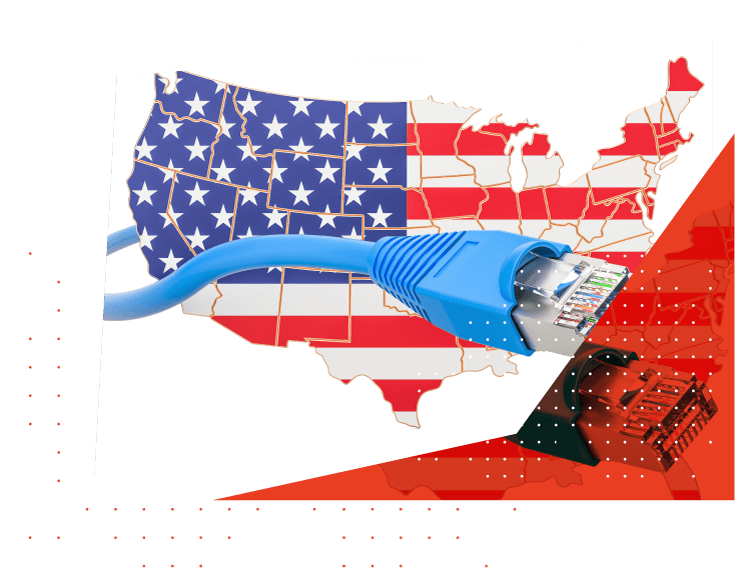
Finally, we’ll explore the merits of utilizing these businesses, which grant access to advanced technologies, broad reach across the country, and economical solutions designed for your individual requirements. Stay tuned as we navigate through the world of structured cabling systems together!
- What is Structured Cabling?
- Why Invest in Professional Structured Cabling Services?
- What to Look for in a Professional Structured Cabling Company?
- Common Types of Structured Cabling Systems
- Advantages of Working with National Structured Cabling Companies
- Contact ACIS Low Volt for Structured Cabling Solutions
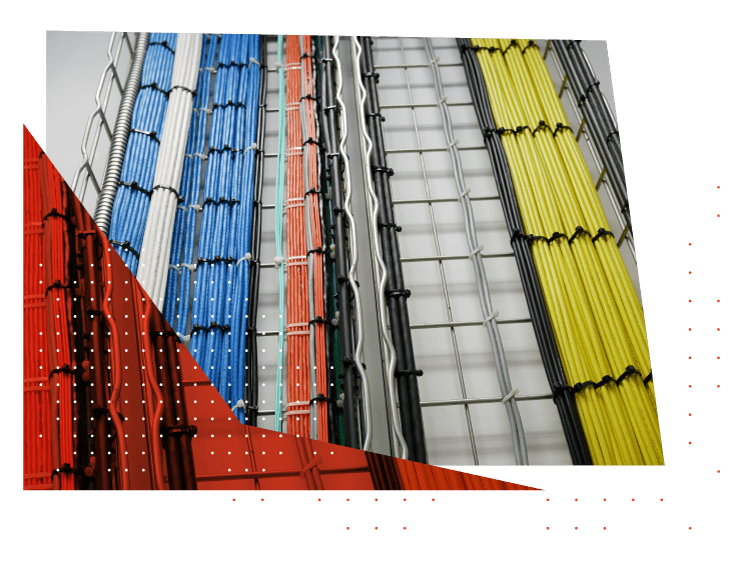
What is Structured Cabling?
A dependable and effective communication infrastructure is vital for success in the modern business world. One of the critical components of this infrastructure is structured cabling, which serves as the backbone for transmitting data, voice, and video signals throughout your facility. We will gain insight into how it can benefit today’s business environment by exploring the fundamentals of structured cabling, its advantages, and the components of a complete system.
Definition of Structured Data Cabling
Structured cabling is an organized approach to designing and installing network cables in a building or campus setting. It provides a standardized architecture enabling seamless connectivity between electronic devices such as computers, telephones, security systems, and audio-video equipment. A well-designed structured cabling system ensures optimal performance and simplifies maintenance by reducing clutter caused by tangled wires.
Benefits of Structured Data Cabling
- Improved reliability: A professionally installed structured cabling system minimizes downtime due to cable failures or other technical issues.
- Easier troubleshooting: With clearly labeled cables and centralized patch panels in place within your organization’s IT room or server closet makes it easier to identify problems when they arise.
- Better scalability: As your business grows over time with additional employees or locations added on board, upgrading becomes much simpler since all necessary connections are already established through existing wiring layouts allowing for quick integration into new spaces without major disruptions during expansion phases.
-
Faster data transmission speeds: A well-organized structured cabling setup can support higher bandwidths than traditional point-to-point connections resulting in faster transfer rates between devices across networks, ultimately leading to increased productivity levels within your company.
Components of a Structured Cabling System
A comprehensive, structured cabling system typically consists of several key components, including:
- Horizontal cabling: This includes the cables that run from workstations to network equipment, such as switches and routers in your IT room or server closet. Common types of horizontal cables include Cat5e, Cat6, and fiber optic cables.
- Vertical (backbone) cabling: These are the main cables connecting different floors or buildings on a campus setting, often utilizing high-capacity fiber optic lines for optimal performance over long distances without signal degradation issues arising due to interference factors like electromagnetic fields generated by nearby electrical appliances/devices etcetera.

- Patch panels and cross-connects: Patch panels serve as central hubs where all horizontal cable runs terminate, allowing easy management. In contrast, cross-connects enable quick reconfiguration options between various devices connected via patch cords depending upon specific needs at any given point during daily operations – thus providing the flexibility required throughout ongoing maintenance processes.
Cable management systems: These solutions help organize and protect your network infrastructure through proper routing techniques alongside keeping everything neat & tidy inside designated spaces, thereby reducing potential hazards associated with tangled wires left unattended around office premises, especially if employees need access regularly.
Structured cabling is an important component of any business’s IT infrastructure, and investing in professional structured cabling services can help ensure the system runs smoothly and efficiently. With this knowledge in mind, let’s explore why investing in a quality structured cabling service provider pays.
Why Invest in Professional Structured Cabling Solutions?
Investing in professional structured cabling services is essential for business owners who want to ensure efficient and reliable communication within their facilities. By working with a reputable provider, businesses can enjoy numerous benefits that contribute to the overall success of their operations.
Quality Assurance and Reliability
Hiring an experienced structured cabling company guarantees quality assurance and reliability. Professionals boasting the technical proficiency, understanding, and equipment necessary to create, set up, and sustain a customized cabling system that meets your precise requirements are available. This ensures that your network infrastructure performs optimally without any disruptions or downtime. Additionally, professional companies adhere to industry standards such as BICSI, ensuring compliance with building codes and regulations.

Cost Savings and Efficiency
A well-designed structured cabling system significantly contributes to cost savings by reducing operational expenses. For instance:
- An organized cable management system simplifies troubleshooting efforts when issues arise.
- Fewer maintenance requirements due to high-quality installations reduce long-term costs.
-
The ability to easily add new devices or make changes minimizes labor expenses during expansions or upgrades.
In addition, a professionally installed structured cabling solution enhances efficiency by providing faster data transmission speeds across various electronic devices like computers, telephones, security systems, and audio-video equipment – ultimately improving productivity levels within your organization.
Scalability and Flexibility
A key advantage of investing in professional structured cabling services is scalability – allowing you the flexibility needed for future growth. As your business expands, so too will your communication needs. A well-designed cabling infrastructure can easily accommodate additional devices and increased bandwidth requirements without the need for major overhauls or disruptions to daily operations.
Moreover, a structured cabling system provides flexibility by simultaneously supporting multiple applications and services – such as voice, data, video conferencing, and Power over Ethernet (PoE). This enables businesses to adapt quickly to changing technology trends while maintaining seamless connectivity throughout their facilities.
Investing in professional network cabling services can provide reliable, scalable, flexible, and cost-effective solutions. Given the advantages of investing in professional structured cabling services, it is essential to consider a company’s background and proficiency when selecting.
What to Look for in a Professional Structured Cabling Company?
Selecting the right professional structured cabling company is crucial for ensuring your business’s communication infrastructure is reliable, efficient, and scalable. To help you make an informed decision, consider the following key factors when evaluating potential vendors:
Experience and Expertise
A reputable structured cabling company should have extensive experience designing and installing cabling systems for businesses of various sizes and industries. Their team should be composed of skilled technicians with industry certifications, such as Registered Communications Distribution Designer (RCDD) or Certified Network Infrastructure Technician (CNIT). These credentials demonstrate their commitment to staying up-to-date with the latest industry standards and best practices.
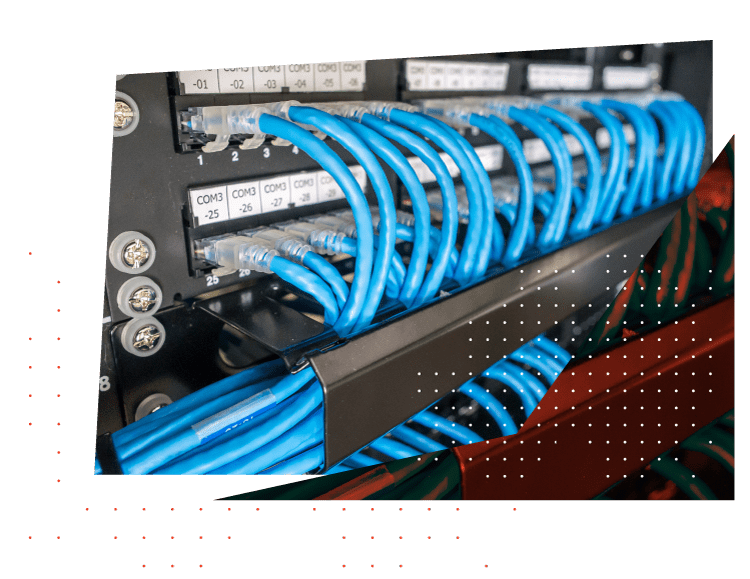
Quality Products and Services
The quality of materials used in your structured cabling system can significantly impact its performance, reliability, and longevity. Choose a vendor that uses high-quality products from well-known manufacturers. Additionally, ensure they offer comprehensive services such as site surveys, design consultation, network installation supervision, testing & certification, maintenance & support.
Comprehensive Solutions and Support
A comprehensive, structured cabling provider should be able to provide tailored solutions for designing, installing, maintaining, and supporting various cabling systems, such as copper-based, fiber optic, or wireless. They should also offer ongoing support services like troubleshooting, upgrades & expansions, documentation updates & management.
By considering these factors when selecting a professional structured cabling company for your business’s communication infrastructure needs, you can ensure that you invest in a reliable system that will serve your organization well into the future.
When selecting a professional structured cabling company, looking for experience and expertise, quality products and services, and comprehensive solutions and support is important. Thus, it is necessary to examine the various structured cabling systems that are currently on offer.
Common Types of Structured Cabling Systems
Various types of structured cabling systems are available to accommodate businesses’ diverse needs. This section will explore three common types: copper-based systems, fiber optic systems, and wireless systems.
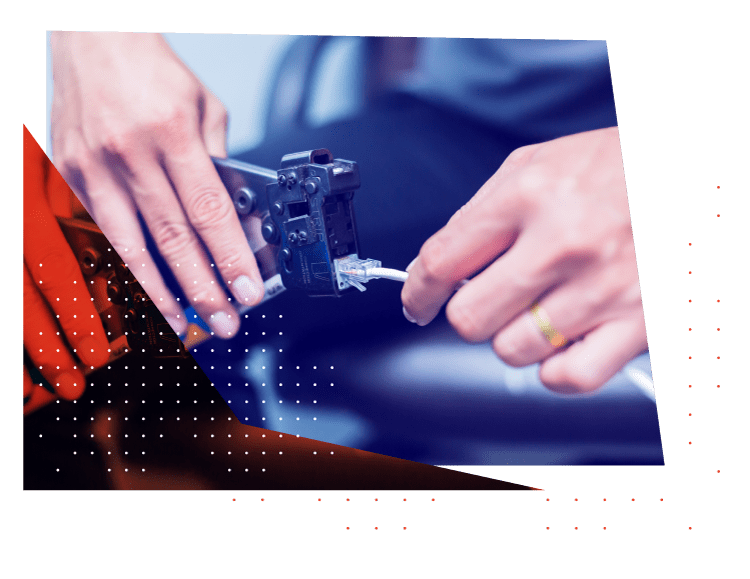
Copper Structured Cabling Solutions
Copper structured cabling solutions have been the industry standard for many years due to their cost-effectiveness and reliability. Copper cables are a versatile solution that can be used for both voice and data transmission needs. These systems use twisted-pair cables made from copper wires that transmit data through electrical signals. The most commonly used categories in copper cabling include Cat5e, Cat6, and Cat6a.
- Cat5e: Suitable for small-to-medium-sized businesses with moderate bandwidth requirements; supports speeds up to 1 Gbps over distances up to 100 meters.
- Cat6: Offers higher performance than Cat5e with support for speeds up to 10 Gbps over shorter distances (up to 55 meters); ideal for larger organizations or those requiring high-speed connections.
-
Cat6a: Provides even better performance than Cat6 by supporting speeds up to 10 Gbps over longer distances (up to 100 meters); perfect choice when planning future network expansions or upgrades.
Fiber Optic Cabling Systems
Fiber optic structured cabling solutions offer several advantages over traditional copper-based networks, such as faster transmission rates, greater bandwidth capacity, immunity from electromagnetic interference (EMI), and more extended distance capabilities without signal degradation (source). Fiber optics systems employ slender strands of glass or plastic to send data via light pulses, rendering them ideal for high-speed and long-distance communication requirements. There are two main types of fiber optic cables:
- Single-mode Fiber (SMF): Designed for long-distance transmission with minimal signal loss; typically used in large-scale networks such as those found in universities, government institutions, and telecommunication companies.
- Multimode Fiber (MMF): Suitable for short-range applications within a building or campus environment; often used in a local area network (LAN) and data centers.

Wireless Networks
In addition to wired structured cabling solutions, wireless systems have become increasingly popular due to their flexibility and ease of deployment. Wireless technology allows devices to connect without needing physical cables by using radio frequency signals instead. Some advantages of implementing a wireless system include:
- Easier installation and maintenance compared to traditional wired networks.
- Greater mobility for employees who can access network resources from any location within the coverage area.
- Potential cost savings on infrastructure materials such as cabling, conduit, and cable trays.
Selecting the correct type of structured cabling system depends on your specific business requirements like budget constraints, performance expectations, future expansion plans, etc. Partnering with an experienced national structured cabling company will ensure you receive expert guidance throughout this process while benefiting from advanced technologies tailored to your unique needs.
Structured cabling systems are essential for businesses to remain competitive in the modern digital age. Working with a national structured cabling company offers several advantages, including access to advanced technologies and nationwide coverage and support.

Advantages of Working with National Structured Cabling Companies
Working with national structured cabling companies can offer numerous benefits to business owners looking for reliable and efficient communication infrastructure. These advantages include access to advanced technologies, nationwide coverage and support, and cost-effective solutions.
Access to Advanced Technologies
National structured cabling companies have the resources and expertise to stay updated on the latest advancements in cabling technology. By partnering with these companies, you gain access to cutting-edge products that improve your network’s performance while ensuring future compatibility as new devices emerge. For example, CommScope offers a wide range of innovative copper and fiber optic cables designed for high-speed data transmission.
Nationwide Coverage and Support
A significant advantage of working with national structured cabling companies is their ability to provide services across multiple locations throughout the country. This ensures consistent quality standards regardless of where your business operates or expands in the future. Additionally, having a single point-of-contact simplifies project management by streamlining communications between different teams involved in designing, installing, maintaining, or upgrading your network infrastructure.
- Consistent Quality Standards: A nationwide company will ensure uniformity in service delivery across all locations.
- Simplified Project Management: Dealing with one provider reduces confusion when coordinating various aspects of your network implementation process.
- Easier Expansion Plans: When expanding into new territories or opening additional branches, it becomes more convenient when using a single vendor who already understands your requirements well.
Cost-Effective Solutions
Lastly, national structured cabling companies can offer cost-effective solutions due to their economies of scale. These companies can utilize their expertise and resources to create a system of networks that caters to your individual requirements while remaining cost-effective. Moreover, they often provide flexible pricing options tailored to suit different budgets.
For instance, ACIS Low Volt, a structured data cabling company located in Springfield, MO, offers businesses professional structured cabling services.
In summary, partnering with a national structured cabling company is an excellent choice for business owners seeking reliable communication systems that support current and future technology requirements. These companies provide access to advanced technologies while ensuring nationwide coverage and cost-effective solutions tailored to meet each client’s unique needs.
Contact ACIS Low Volt for Structured Cabling Solutions
The advantages of working with national structured cabling companies are clear when designing and installing a comprehensive, structured cabling system. Not only do they have the capability to provide you with up-to-date technology and industry-standard best practices, but their expertise ensures that your network is optimally configured for performance and dependability. Furthermore, these companies offer competitive pricing options for quality services without breaking your budget. With all these benefits combined, investing in professional structured cabling services from a trusted national vendor will ensure that your communication needs are met now and into the future.
Let ACIS Low Volt provide your business with the most reliable and secure national structured cabling services. Our team of experienced professionals will ensure that all of your data is safely transferred, backed up, and stored securely. ACIS Low Volt provides hands-on oversight for every structured cabling project, ensuring that every detail is attended to carefully.

